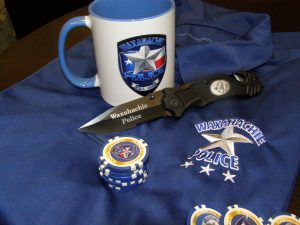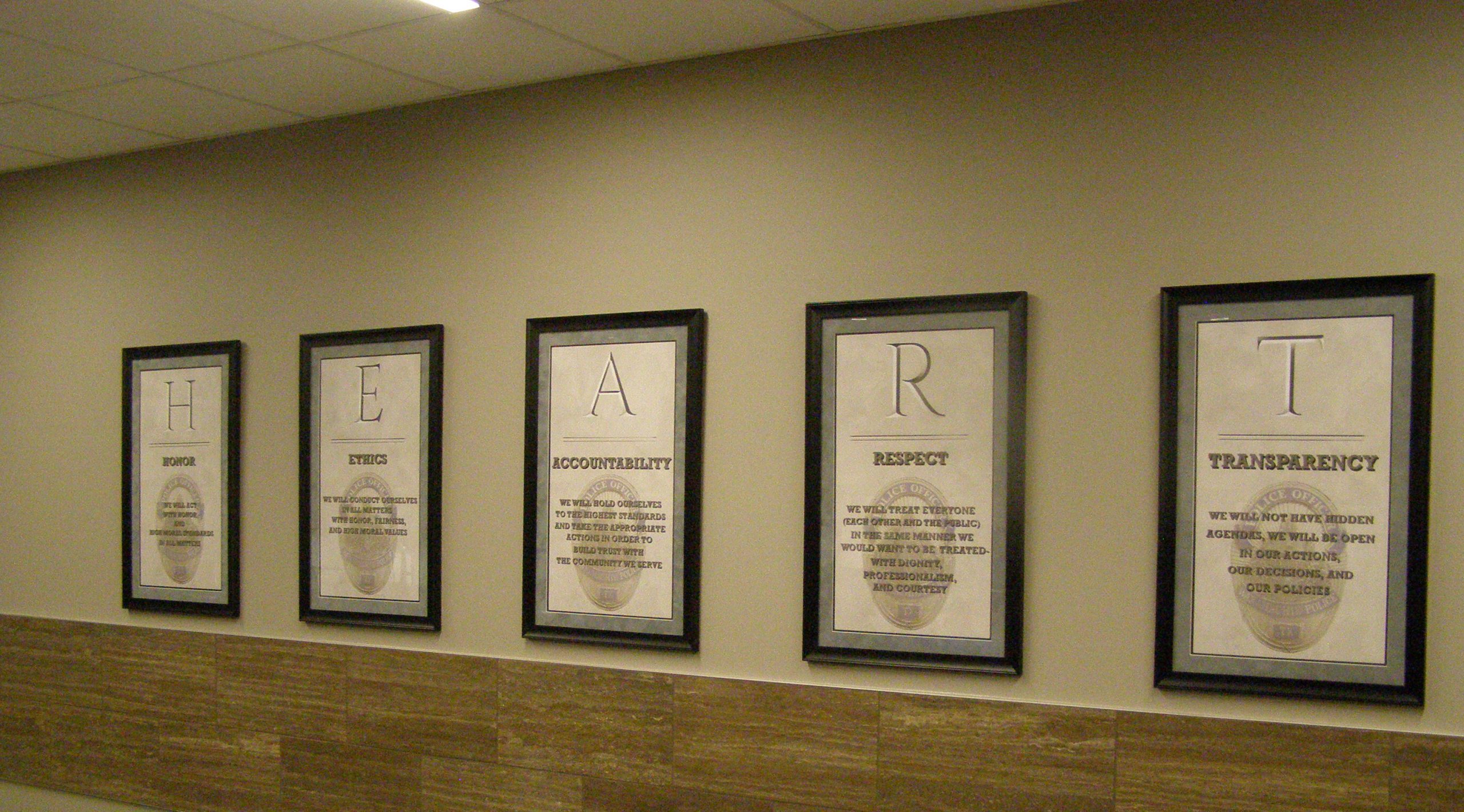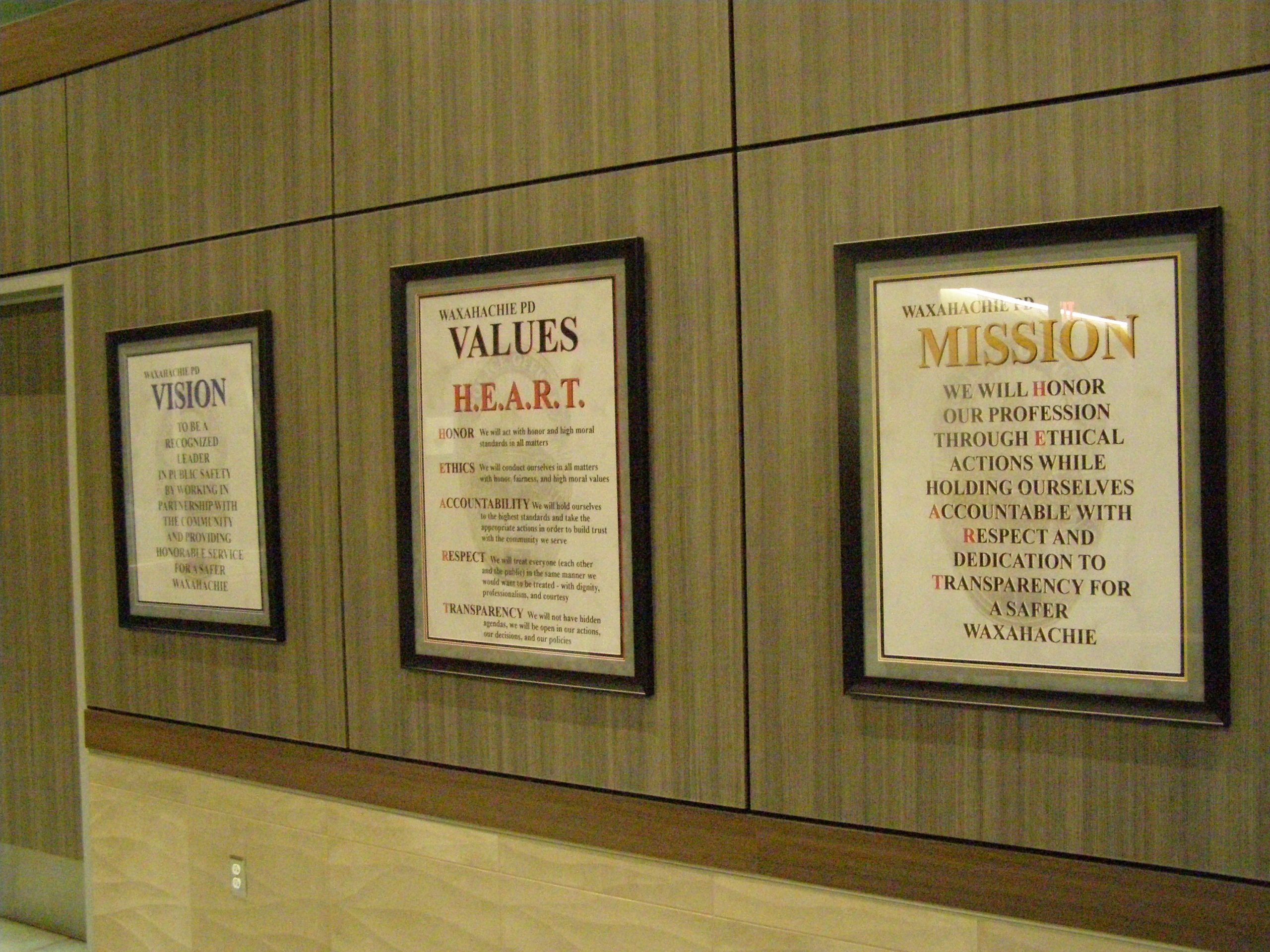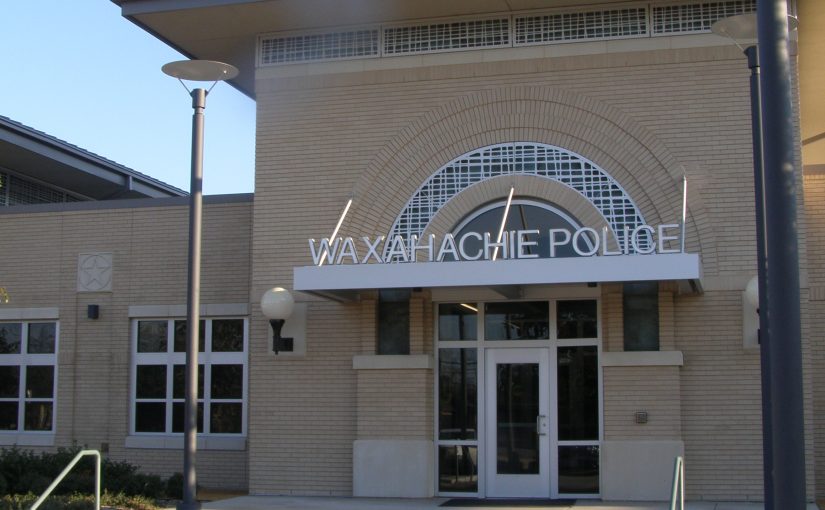As with law enforcement agencies worldwide, the Waxahachie, Texas, Police Department has struggled to attract good applicants in recent year. Situated just 20 miles south of Dallas in a community of 37,000, the department competes with many agencies in the Dallas–Fort Worth metropolitan area. Four years ago, the department attracted a very small applicant pool, and it became clear the department would need to adjust its approach to recruiting and cultivate a reputation in the area that would draw applicants to Waxahachie.
The first thing the department had to do was to take a critical look at the department culture and its reputation from the outside. Even though Waxahachie Police Department offered competitive salary and benefits, so did all of the surrounding agencies. In order to draw quality applicants, the department had to look beyond that factor. The agency had to create a work environment and a culture that current and potential officers would want to be a part of. The department recognized that, as an agency, it did not have that type of culture. There was very little organizational pride. The staff was working in an old facility that needed repairs, and many officers were using inadequate equipment or their own personal equipment. Department leadership also recognized that they did not have the budget to travel all over the state or country for recruiting. It was decided that the best recruiting approach would be to use all of the agency’s officers and not just designated recruiters. A work environment needed to be created that employees would be proud of and that others would want to join. Every officer is proud to be in the police profession, but Waxahachie had to establish organizational pride.
Establishing Organizational Pride
Equipment and Facilities
Luckily, funding was available to start replacing old equipment and to invest in new, good quality equipment. Officers were provided with what they needed to perform their jobs—while they might not be provided everything that they wanted, they would be provided what they needed, and the focus was on quality, not just quantity. Everything was reviewed, from uniforms to office equipment. Where needs were identified, they were addressed. The SWAT team equipment was reviewed and needed items were purchased for them. As the officers gained the tools they needed to do their jobs well, organizational pride started to return.
The department also had the opportunity to start planning a new facility. Of course, there had been talk of a new facility for years, but now, it was actually moving forward. A new facility would boost the organization’s pride, but a facility alone cannot create a positive culture. With the support of the city manager and council, a brand-new facility with all new furnishings was designed and built. The goal, and the direction to the architect, was to create a warm and comfortable work environment within the building. Every supervisor was included in the design process, resulting in a design that had input from the department and reflected the staff’s input. In order to create the desired work environment, the architect utilized a significant amount of natural light and truly created a comfortable work environment.
Standards
The department was already a “recognized” agency in the state’s Best Practices program, but most officers did not understand the program. The Texas Police Chiefs Association created a recognition program that requires agencies to be in compliance with approximately 166 best practices standards. An education campaign was started within the department to educate officers about the program, the benefits of it, and its significance. Again, these efforts were growing pride.
Training and Professional Growth
Training was another issue hampering organizational pride. While the officers were receiving training that met state standards, the training lacked a focused approach. A strategy was developed to enhance training. Texas requires that each officer receive at least 40 hours of training in a two-year period; Waxahachie decided to double that amount of training for every officer and provide approximately 40 hours of training every year. The adopted plan was to utilize the month of February and create a 40-hour curriculum, which would be repeated four times so that every officer received the defined training. In addition to this, a training plan was developed for supervisors. Under the new plan, supervisory training was tracked, and, in addition to the required initial supervisory training, each supervisor would receive additional supervisory training at least every three years. It was a challenge to implement the expanded training plan, but the results made it worthwhile.
A mentoring program was also initiated for new officers. When surveyed, most officers felt that it took three to five years of experience before an officer was comfortable and competent in just about any situation. The goal was to shorten that learning curve by assigning a mentor to each new officer. Initially, the mentoring began after the academy, but it was soon modified to begin on the date of hire. The mentor was available while the recruit was attending the academy and provided a second avenue for the recruit to ask questions and get clarification on what was being taught. This approach also enhanced the feeling that the recruit “belonged” in the organization. During the field training program, the mentor still touched base with the new officer, but was careful not to interfere with the field training officer. Upon completion of the field training program, the mentor worked with his or her mentee at least once a month as a two-officer unit. In this way, the mentor could work calls alongside his or her protégé and give advice throughout the shift.
 Most agencies do a great job of dealing with negative behavior, but few really concentrate on positive performance. Waxahachie leaders felt that they needed to be different. They wanted to focus on the positive. A “poker chip” program was initiated to reward good performance. Supervisors would hand out a poker chip to an employee who demonstrated good performance. It took some time for all of the supervisors to understand that it shouldn’t require some heroic action to earn a chip—the chip was the same as saying, “good job.” The poker chip was just adding something tangible to a simple “thank you.” As employees accumulated chips, they could redeem the chips for departmental merchandise. The merchandise was often items that would add professionalism to the department (standardized polo shirts, work out hoodies, etc.). It wasn’t long before employees were actively trying to earn the poker chips. Additionally, the poker chip merchandise was intentionally maintained in the chief’s office so that officers had an opportunity to have a positive interaction with the chief when redeeming their poker chips. It allowed the chief to congratulate the officers in person for earning their chips. The department was focusing on the positive—and so the culture became more positive.
Most agencies do a great job of dealing with negative behavior, but few really concentrate on positive performance. Waxahachie leaders felt that they needed to be different. They wanted to focus on the positive. A “poker chip” program was initiated to reward good performance. Supervisors would hand out a poker chip to an employee who demonstrated good performance. It took some time for all of the supervisors to understand that it shouldn’t require some heroic action to earn a chip—the chip was the same as saying, “good job.” The poker chip was just adding something tangible to a simple “thank you.” As employees accumulated chips, they could redeem the chips for departmental merchandise. The merchandise was often items that would add professionalism to the department (standardized polo shirts, work out hoodies, etc.). It wasn’t long before employees were actively trying to earn the poker chips. Additionally, the poker chip merchandise was intentionally maintained in the chief’s office so that officers had an opportunity to have a positive interaction with the chief when redeeming their poker chips. It allowed the chief to congratulate the officers in person for earning their chips. The department was focusing on the positive—and so the culture became more positive.
A Family Atmosphere
The department also started focusing on creating a “family” atmosphere. A conscious effort was made to establishing the family atmosphere from day one when applicants tested with the agency. Officers were encouraged to be present on the test date, greet the applicants, and wish them well. The mentoring program helped maintain that atmosphere while the recruits were in the academy. Inside the department, there were some shifts that had already achieved a family atmosphere, due to particular sergeants and lieutenants, but the department did not feel like a family as a whole. The goal was to remove barriers between shifts, divisions, and administration and to start building a bond between all employees. Every calendar quarter, the department started having hamburger cookouts or pancake breakfasts and bringing the various shifts together to socialize. The officers’ families were also included in these events. In some cases, bounce houses were provided for the kids and toys (Frisbees, balls, etc.) were given as gifts. The family atmosphere started to develop.
Annual awards for Officer of the Year, Civilian of the Year, and the Supervisor of the Year were reestablished. In the past, these awards had been given out, but the chief made the selections, and the practice had been discontinued over time. It was decided to reinstate these awards, but they would be determined in a different manner. Every member of the department was encouraged to make nominations for the awards, but these awards would now be decided by a panel of their peers—not the chief. The awards were presented at a dinner hosted by the department and shared with the officers and their families. The dinner provided an opportunity to recognize achievements in front of the recipients’ peers and families.
Values and Mission
The department was focusing on the positive and getting positive results, but more was needed. A culture of excellence, teamwork, and camaraderie still needed to be established. An annual retreat with all supervisors holding the rank of sergeant or higher was initiated. The retreat focused on the department’s strengths and weaknesses. The first year was difficult, and it was obvious that many of the supervisors were suspicious of the purpose behind the retreat. There was a lot of hesitancy to honestly identify issues. A focus was established that any issues identified were issues for everyone to work on and not just for the chief to fix. Shared responsibility and leadership were emphasized. It can be difficult for a chief to stand in front of the staff and allow them to openly discuss issues—especially if that discussion or criticism is aimed at administration. However, the payoff was well worth any discomfort. The second year at the retreat, supervisors were more open-minded and willing to share, and more was accomplished in establishing ownership. By the third retreat, everyone engaged in great discussions and developing solutions. The retreat agenda was expanded to have some of the lieutenants and assistant chiefs present segments of the curriculum and lead discussions. At this point, supervisors had a much clearer understanding of their role in maintaining a positive work environment and working together as a team.
During these retreats, it was decided to identify the values that the Waxahachie Police Department wanted to live by. The supervisors worked on these efforts collectively and came up with several varieties of values and ways to “brand” the organization. After the retreat, a survey was issued to all of the department’s employees with the various options of values. It was necessary to have buy-in from the entire department. In the end, the employees chose H.E.A.R.T—Honor, Ethics, Accountability, Respect, and Transparency.

Subsequent to the values, the focus shifted to developing a vision statement and mission statement. Again, all of the supervisors (sworn and civilian) worked together to develop these statements. In the end, they crafted a vision statement and mission statement that reflected the commitment of the Waxahachie Police Department. After the retreat, the supervisors shared the vision and mission statements with their employees. Then, the statements were printed, framed, and placed throughout the facility. Some departments and companies may have catchier statements, but the value of Waxahachie’s statements is that they were created by the entire organization and not just the CEO. There is buy-in from the entire department.
Of course, it is one thing to develop vision statements and mission statements and values; the goal (and challenge) is to build the vision and mission into the organizational culture. In addition to having the statements posted throughout the station, each new recruit is taught these values and time is spent with the recruits to explain the meanings behind each component. The vision, mission, and values are included in the policy manual, and each disciplinary action is framed around those values. Every effort is made to reinforce those values at every opportunity. Every opportunity is used to remind officers of the vision and the mission, and they are being built into the department culture.

Community Relationships
In order to build a positive reputation, the relationship with the community had to be strong. The agency had gotten complacent about building relationships with the community. It was involved in the usual events like the Citizen Police Academy, but the effort was minimal. The department started looking for opportunities and found that the local businesses were excited to partner with it. Soon, there were new events being developed. A Cops-N-Kids picnic was organized in a large park, for which local businesses contributed activity booths, bounce houses, and free hotdogs, and approximately 75 bicycles were given away. Breakfast with a Cop was initiated where each elementary school selected a fifth grader to have breakfast with an officer. The officer picks the child up at his or her house in a patrol vehicle and takes the student and any siblings to Chick-Fil-A for breakfast. The children are then delivered to school where they are greeted by their classmates. Coffee with a Cop was also started, along with Shop with a Cop (taking kids without families Christmas shopping), and Chat with the Chief. At first, there were the usual problems getting officers to participate, but it wasn’t long before they were enjoying the positive interactions—and now there are plenty of officers at each event. It was soon determined that today’s police applicants are looking for a department that builds positive relationships with the community and is an integral part of the community. Applicants started seeing the community events on Facebook and applying.
Conclusion
In the end, the way to attract applicants from the outside was to focus on the inside. Employees turned out to be the best recruiters. Officers are genuine when they tell potential candidates why they should apply with Waxahachie Police Department. They are sincere when they talk about morale, training, quality equipment, and a great relationship with the community—and it turns out that applicants are looking for an agency with a family atmosphere that emphasizes being a part of the community. The result of these internal efforts has been a significant increase in the number of applicants, an increase in minority and female applicants, and a much better quality of applicant. d
Please cite as
Wade Goolsby, “Recruiting from the Inside Out: The Waxahachie Way,” Police Chief online, April 8, 2020.



